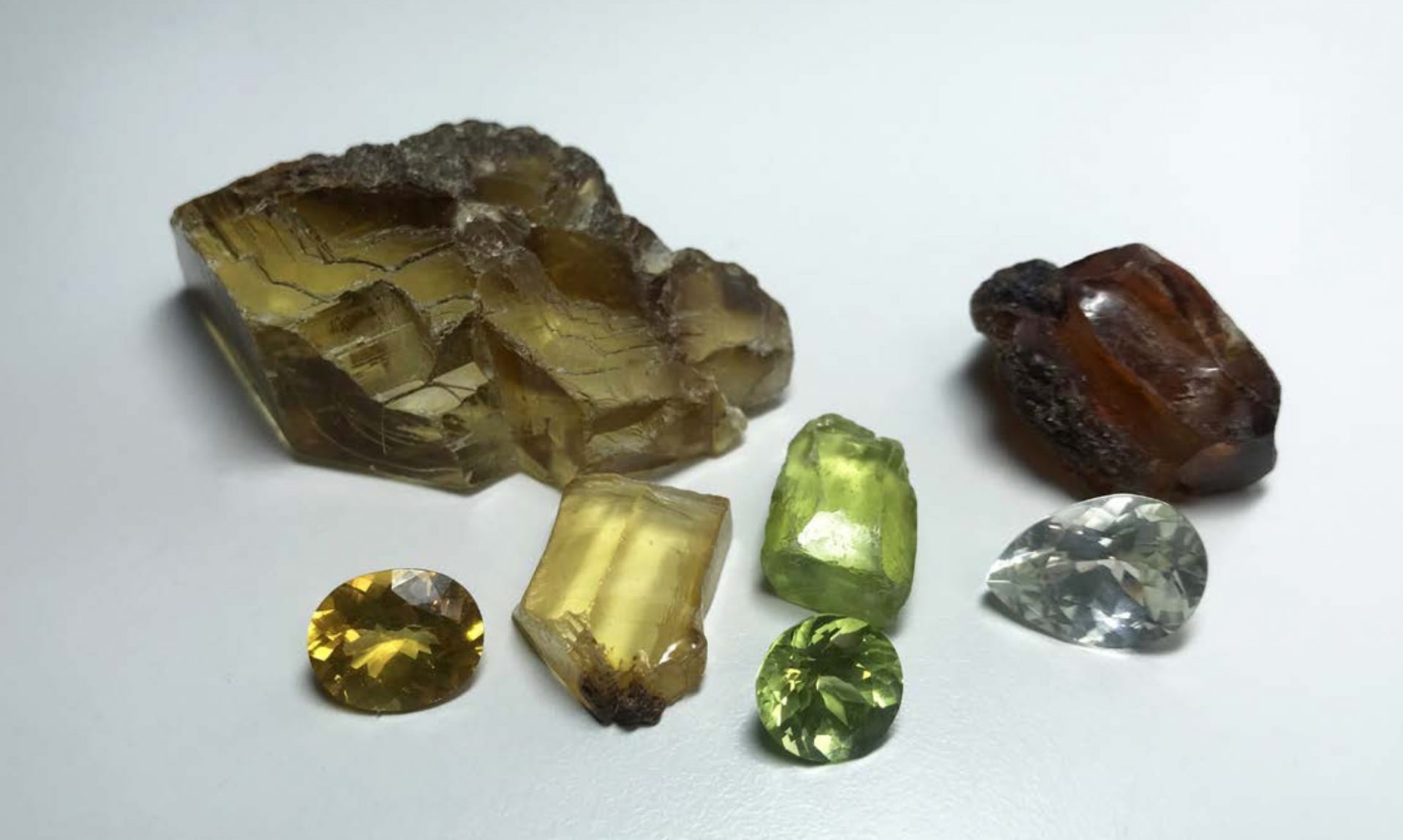New types of synthetic periclase identified by C2S inclusions – dicalcium silicate cement hardener
Naturally occurring periclase is a relatively common mineral phase. Due to its small crystal sizes, it never gained recognition in the gem-industry in terms of commercial importance. Synthetic periclase is commonly used for technological applications and is available in large quantities and sizes (Joachin et al., 2012). In the past, synthetic periclase was marketed in the United States as “lavernite” (Liddicoat, 1969). Concerns about the stability of synthetic periclase have been reported (transforming into brucite with time and exposure) in previous publications (Brown, 1993).
Green synthetic periclase was described in 1996 in the gem-market (De Maggio, et al., 1997). In 2018, a series of faceted and rough gemstones of different colors were submitted to GRS, including brownish-orange, colorless, yellow and green stones. The material was offered as natural garnet, presumably originating from Turkey. The owners submitted a video supposedly of the mine with scenes portraying active hammering on what appeared to be a marble rock (Fig. 1), including dolomite marbles. However, natural periclase is actually very rare and almost never found as big crystals in nature, while synthetic periclase is widely produced for various technical applications...Continue reading by downloading the publication.
© 2023, GRS GemResearch Swisslab AG

